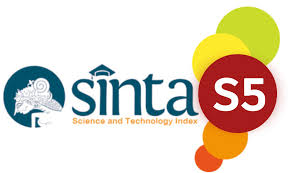Inovasi Teknologi dan Tren Penelitian Global Pada Budidaya Ikan Kakap Putih (Lates calcarifer): Sintesis Bibliometrik (1995–2024)
Keywords:
Barramundi aquaculture, technological innovation, bibliometric analysis, global research trends, Lates calcariferAbstract
Barramundi (Lates calcarifer) is an economically valuable aquaculture species widely cultivated across the Asia-Pacific and beyond. Over the past two decades, technological innovations in barramundi farming—ranging from advanced hatchery techniques, functional feed development, biosecurity measures, to the application of molecular tools—have rapidly evolved to enhance production efficiency and sustainability. However, a comprehensive synthesis of global research trends in this domain remains limited. This study conducts a systematic bibliometric analysis of 1,613 Scopus-indexed publications from 1995 to 2024 to map scientific developments, collaboration networks, and thematic evolution in L. calcarifer aquaculture. The findings reveal a significant growth of publications in the last decade, with dominant contributions from Australia and key Asian countries. Core research focuses include fish immunology, disease resistance, vaccine development, functional feeds, and genetic improvement, reflecting a paradigm shift toward precision and sustainable aquaculture. Highly cited publications and productive affiliations highlight strong academic and industry linkages driving innovation. The study identifies emerging opportunities for future research, including genomic selection for disease-resistant strains and sustainable feed innovations. These insights provide strategic guidance for advancing barramundi aquaculture toward greater sustainability, resilience, and global competitiveness.
References
Ahmed, N., Thompson, S., & Glaser, M. (2018). Global Aquaculture Productivity, Environmental Sustainability, and Climate Change Adaptability. Environmental Management, 63(2), 159–172. https://doi.org/10.1007/s00267-018-1117-3
Awate, S., Huber, R. G., & Mubarka, S. (2023). Whole Genomic Characterization of Streptococcus iniae Isolates from Barramundi (Lates calcarifer) and Preliminary Evidence of Cross-Protective Immunization. Vaccines, 11(9), 1443. https://doi.org/10.3390/vaccines11091443
Frank, D., Kirchhoff, S., Forde, C., & Poole, S. (2009). Investigation of Sensory and Volatile Characteristics of Farmed and Wild Barramundi (Lates calcarifer) using Gas Chromatography−Olfactometry Mass Spectrometry and Descriptive Sensory Analysis. Journal of Agricultural and Food Chemistry, 57(21), 10302–10312. https://doi.org/10.1021/jf902030y
Harzing, A.W. (2007) Publish or Perish, available from https://harzing.com/resources/publish-or-perish
Loughnan, S. R., Smith-Keune, C., Robinson, N. A., Jerry, D. R., & Beheregaray, L. B. (2019). Population genetic structure of barramundi (Lates calcarifer) across the natural distribution range in Australia informs fishery management and aquaculture practices. Marine and Freshwater Research, 70(11), 1533. https://doi.org/10.1071/mf18330
Santillan, E., Yasumaru, F., Vethathirri, R. S., Thi, S. S., Hoon, H. Y., Sian, D. C. P., & Wuertz, S. (2024). Microbial community-based protein from soybean-processing wastewater as a sustainable alternative fish feed ingredient. Scientific Reports, 14(1). https://doi.org/10.1038/s41598-024-51737-w
Van Eck, N., & Waltman, L. (2009). Software survey: VOSviewer, a computer program for bibliometric mapping. scientometrics, 84(2), 523-538.
Downloads
Published
Issue
Section
License

This work is licensed under a Creative Commons Attribution-ShareAlike 4.0 International License.


